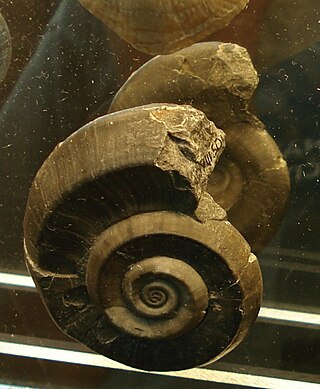
The Euomphalina comprise a major suborder of mainly Paleozoic archaeogastropods, shells of which are hyperstophic to depressed orthstrophic, commonly with an angulation at the outer upper whorl surface thought to be coincident with the exhalent channel; shell wall thick, outer layer calcitic, inner layers aragonitic but not nacreous; operculum calcareous and heavy. Their range is from the Upper Cambrian to the Triassic, and possibly as high as the Upper Cretaceous.

Stomatellinae is a subfamily of small sea snails with a brilliantly nacreous interior of the shell, marine gastropod mollusks in the family Trochidae, the top snails.
Rhaphischismatidae is an extinct family of fossil sea snails, marine gastropod molluscs in the superorder Vetigastropoda. They date from the Lower Carboniferous (Mississippian). The family contains a single genus, Raphischisma. In the Bouchet & Rocroi, 2005), this family is assigned to the Pleurotomariacea.
Bucaniidae is an extinct family of Paleozoic molluscs of uncertain position possibly being either gastropods or monoplacophorans in the superfamily Bellerophontoidea. The family lived from the Lower Ordovician to the Devonian and have shells in which the apertural margins tend to flare. Most genera have a slit and selenizone, others some modification of this feature.
The †Raphistomatidae is a taxonomic family of fossil sea snails, Paleozoic marine gastropod molluscs. This family was established by Koken in 1896. This family is found in the fossil record from the Upper Cambrian to the Middle Permian.

Euomphaloidea, originally Euomphalacea, is an extinct superfamily of marine molluscs that lived from the Early Ordovician to the Late Cretaceous, included in the Gastropoda but speculated as instead perhaps Monoplacophora.
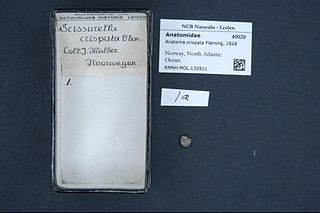
Anatoma crispata is a species of minute sea snail, a marine gastropod mollusk or micromollusk in the family Anatomidae.

Calliotropis infundibulum is a species of sea snail, a marine gastropod mollusk in the family Eucyclidae.
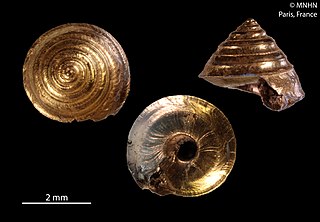
Carenzia carinata is a species of sea snail, a marine gastropod mollusk in the family Seguenziidae.
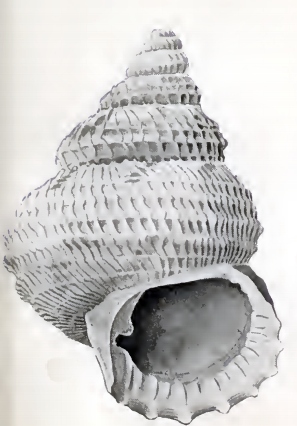
Danilia telebathia is a species of small sea snail, a marine gastropod mollusc in the family Chilodontaidae.

Lischkeia imperialis, common name : the giant imperial margarite, is a species of sea snail, a marine gastropod mollusk in the family Eucyclidae.

Trochia is a genus of sea snails, marine gastropod mollusks in the family Muricidae, the murex snails or rock snails.
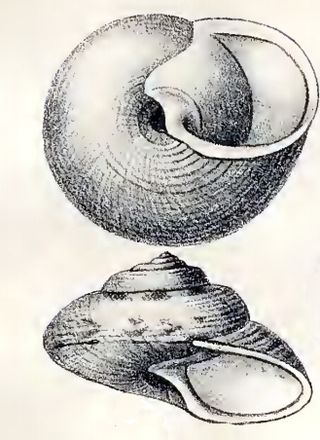
Callogaza watsoni is a species of sea snail, a marine gastropod mollusk in the family Margaritidae.

Gaza superba, common name the superb gaza, is a species of deep sea sea snail, a marine gastropod mollusc in the family Margaritidae.
The Amargosa springsnail is a snail in the family Hydrobiidae. It is endemic to the Amargosa River drainage of the southwestern United States. The small snail is known to occur in several near-brackish springs, including the type locality of Saratoga Springs in Death Valley.
Sinutropis is a genus of fossil sea snails, extinct euomphalid archaeogastropods from the Upper Silurian.
Cantharidoscops frigidus, the polar margarite, is a species of sea snail, a marine gastropod mollusk in the family Trochidae, the top snails.

Coelotrochus viridis, common name the green top shell, is a species of sea snail, a marine gastropod mollusk in the family Trochidae, the top snails.
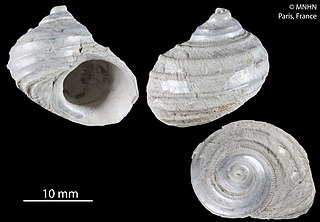
Cataegis finkli is a species of sea snail, a marine gastropod mollusk in the family Cataegidae.
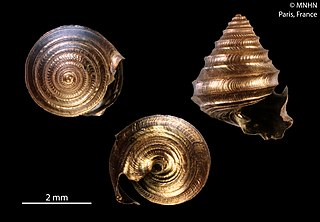
Seguenzia formosa is a species of extremely small deep water sea snail, a marine gastropod mollusk in the family Seguenziidae. The epithet "formosa" means "beautiful".












